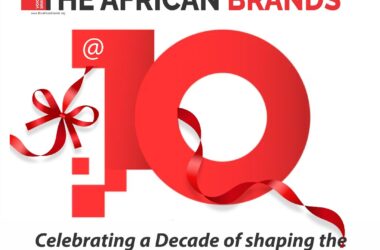All over the world, there is a keen debate in the marketing space about the balance of how brand penetration and loyalty drives growth. There’s a host of industry-defining evidence which is bread-and-butter learning for smart marketers on how brand grow.
Hitherto, the comfort of reliable repeat sales – was considered a relatively safe approach. However, some experts are of the view that, brand growth is more likely to be driven by gaining new users (i.e increasing penetration/customer acquisition) rather than increasing brand loyalty.
Checks by CONSUMERS ASSEMBLY shows that, growth in market share comes by increasing popularity and gaining buyers of all types, many of whom will be only light buyers of the brand. Brands mainly compete as “mere lookalikes”, with consumers not really distinguishing one from another, thus brand loyalty doesn’t really exist.
In addition, brand growth is, therefore, about building physical availability (via distribution) and mental availability (saliency). In recent years, customer acquisition as a primary driver of brand growth – as opposed to loyalty – has become a relatively orthodox position, adopted by many brands. It relies on a model known as ‘Dirichlet’, which describes variation in individuals’ loyalties across a category-buying group.
Speaking on this issue, a brand and marketing analyst, Nikson Wonole told CONSUMERS ASSEMBLY that, “there is a popular school of thought that regards brand penetration as the main factor in brand growth, but a leading researcher says loyalty is more important.”
Expanding your customer base and finding ways to increase your revenues from existing consumers is, undoubtedly, a good venture for any marketer,” for example, he continued, “a 2015 GfK analysis of more than 100 leading consumer packaged goods (CPG) brands in Germany found that brands with a higher penetration also enjoyed stronger (value-based) market shares and loyalty.” It was also the case that brands with a higher penetration enjoyed better scores on some attitudinal brand measures. He added
He also noted that, “market share and loyalty do not always correlate with brand penetration, there are brands with a relatively low penetration that enjoy higher market share and loyalty than brands with a conversely higher penetration.”
According to him, “in a complex environment where many factors can affect a brand’s top-line performance, “the emotional quality of the relationships that a brand has with its customers is every bit as important (and arguably more so) as the number of relationships it holds.”
For him, “there is ample evidence to show that brand success requires more than a one-size-fits-all approach to brand strategies that focuses on volume at the expense of the quality of customer relationships.”
“Only brands that successfully build a higher number of positive emotional relationships with consumers will enjoy higher penetration and loyalty in the long run.” He added
On his part, a marketing analyst, Enenche Andrew said, loyalties are distributed across consumers with little differentiation between brands. Each brand effectively sells to all category buyers, rather than its own specific brand loyalists. Coke drinkers tend also to drink Pepsi, and vice-versa.
According to him, “consumers do not alter their loyalties often, but they may revise their loyalties over decade-long time spans, largely due to changes in their lives. A common criticism about the Dirichlet model is that it implies loyalty doesn’t exist and that customers are mostly similar.
For example, “Great Northern Breweries brand, needed to boost its mental availability and grow market share for its Super Crisp beer in a crowded but declining category. By evolving its advertising messaging to reflect a new idea of Australian masculinity and pouring more than 70% of its media budget mass media (largely TV and OOH) to reach category buyers, the company grow strongly against the trend of category decline.” He remarked
He said, “brands compete primarily in terms of mental and physical availability, and it is this mental and physical availability that determines the brands customers are loyal to. Market share will change if a brand secures additional mental and/or physical availability. This may come about as a result of superior marketing or through some innovation that leads to real changes in loyalties and, hence, brand growth.”
While speaking on how to measure mental availability, he stated that, brands can look at the competitiveness of their brand, as well as mental penetration (the proportion of category buyers who link the brand to at least one of the category entry points) and network size (the number of potential category entry points the brand is associated with).”
He further disclosed that, British tea drinkers are three times more likely to stick to one tea brand than any average FMCG brand, according to Kantar. But Yorkshire Tea successfully turned to Sharp’s theory to boost its customer base, upping its market share in a declining category by creating fame around its core brand values.
“Canon, the photography equipment brand, was facing the decline of camera sales, with smartphones increasingly popular. It knew that, to grow the brand, it needed to reach new customers rather plumb its existing fans. Canon sought to grow awareness of its mirrorless camera portfolio by boosting top-of-mind awareness, launching a which brought new photography fans to the brand by tapping into social media-style user-generated content.” He added
While penetration and loyalty go hand in hand, analysts argue that loyalty doesn’t increase without penetration. In the pair’s 2016 research, Marketing in the Digital Age, they found that penetration is still three times more likely to be the main driver of growth and profit compared with loyalty.









